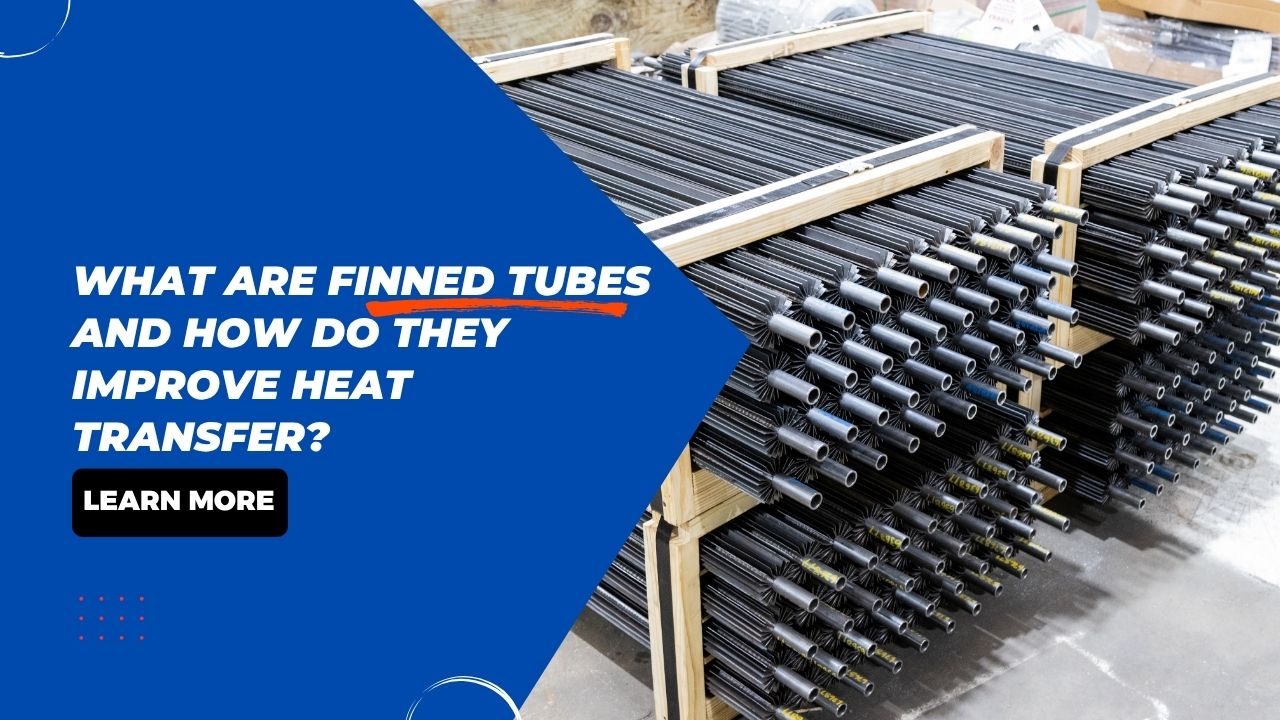In industrial processes where heat exchange is critical, the right equipment can make a massive difference in efficiency and cost-effectiveness. One such component that plays a pivotal role in optimizing heat transfer is the finned tube. This blog will explore what finned tubes are, how they work, their types, applications, and why they are a superior choice for many industrial heat exchange needs.
What is a Finned Tube?
A finned tube is a type of heat exchanger component designed to increase the surface area
available for heat transfer. By adding fins—extended surfaces that project from the base
tube—these components significantly enhance thermal performance by allowing more heat to be transferred between the tube and the surrounding medium.
Basic Structure
Finned tubes consist of: A base tube (usually made of carbon steel or stainless steel)
Fins attached to the exterior surface (commonly aluminum or stainless steel)
The fins act as additional surface area to expedite the heat exchange process, particularly
in systems using gases, which are less efficient at transferring heat than liquids.
Why Are Finned Tubes Important in Heat Transfer?
Heat transfer is fundamental in various industrial operations, including power generation and petrochemical refining. However, gases are poor conductors of heat. To overcome this limitation, engineers increase the contact surface area with fins to facilitate better thermal conductivity.
Advantages of Using Finned Tubes
Increased surface area: More surface for heat exchange. Improved heat transfer efficiency: Especially beneficial for air-side heat transfer. Compact design: Allows for more compact and efficient heat exchanger units.
Cost savings: Higher efficiency can reduce energy use and operational costs.
How Do Finned Tubes Work?
The principle is straightforward: increasing the surface area allows for more effective heat
dissipation. When a fluid flows inside the base tube and air or another fluid flows outside, the fins accelerate the rate at which heat is either absorbed or released.
This is particularly effective in air-cooled heat exchangers, where the low heat transfer
coefficient of air is a limiting factor. Fins compensate by maximizing surface area.
Types of Finned Tubes
Different finned tube designs cater to various applications. Here are the most commonly used
types:
- Helical Solid Finned Tubes
Continuous metal strip wound around the base tube.
Ideal for high-temperature applications.
Common in petrochemical plants and refineries. - Helical Serrated Finned Tubes
Similar to solid but with serrated (cut) fins.
Increased turbulence improves heat transfer.
Used in situations requiring higher thermal efficiency. - Longitudinal Finned Tubes
Fins run along the length of the tube rather than spiraling.
Useful in gas heaters and boilers. - Tubos Aletados Incrustados
Fins are inserted and brazed or welded into grooves on the tube.
Offers superior bond strength and thermal conductivity. - Tubos Aletados Extruidos
Fins and tubes are formed from a single piece of metal.
High mechanical strength and corrosion resistance.
Ideal for corrosive environments.
Common Applications of Finned Tubes
Finned tubes are versatile and used across various industries:
- Power Generation
- In steam condensers and economizers
- Enhances thermal efficiency in turbines
- Petrochemical Industry
- For oil and gas cooling
- Used in distillation and reboiling processes
- Food and Beverage
- For pasteurization and refrigeration
- Maintains temperature control efficiently
Common Applications of Finned Tubes
| Power Generation | In steam condensers and economizers |
| Enhances thermal efficiency in turbines | |
| Petrochemical Industry | For oil and gas cooling |
| Used in distillation and reboiling processes | |
| Food and Beverage | For pasteurization and refrigeration |
| Maintains temperature control efficiently |
Materials Used in Finned Tubes
Choosing the right material is crucial for performance and longevity.
- Carbon Steel: Affordable and durable, commonly used in non-corrosive environments.
- Stainless Steel: Excellent corrosion resistance, ideal for chemical processing.
- Aluminum: Lightweight with decent conductivity, common for air-cooled applications.
Factors to Consider When Selecting Finned Tubes
- Thermal Performance Requirements: Understand the heat duty and required heat transfer rate.
- Operating Environment: Corrosive or high-temperature environments require specific materials and fin types.
- Space Constraints: Compact designs may need high-efficiency finned tubes.
- Maintenance: Ease of cleaning and maintenance can affect long-term performance.
Finned tubes are essential for efficient heat transfer in many industries. They offer increased
surface area, enhanced thermal performance, and can significantly reduce energy costs.
By understanding how finned tubes work and choosing the right type for your application, you can optimize your heat exchange systems for performance and reliability.
Whether you’re involved in power generation or petrochemical processing, incorporating
High-quality finned tubes can lead to measurable improvements in operational efficiency.

